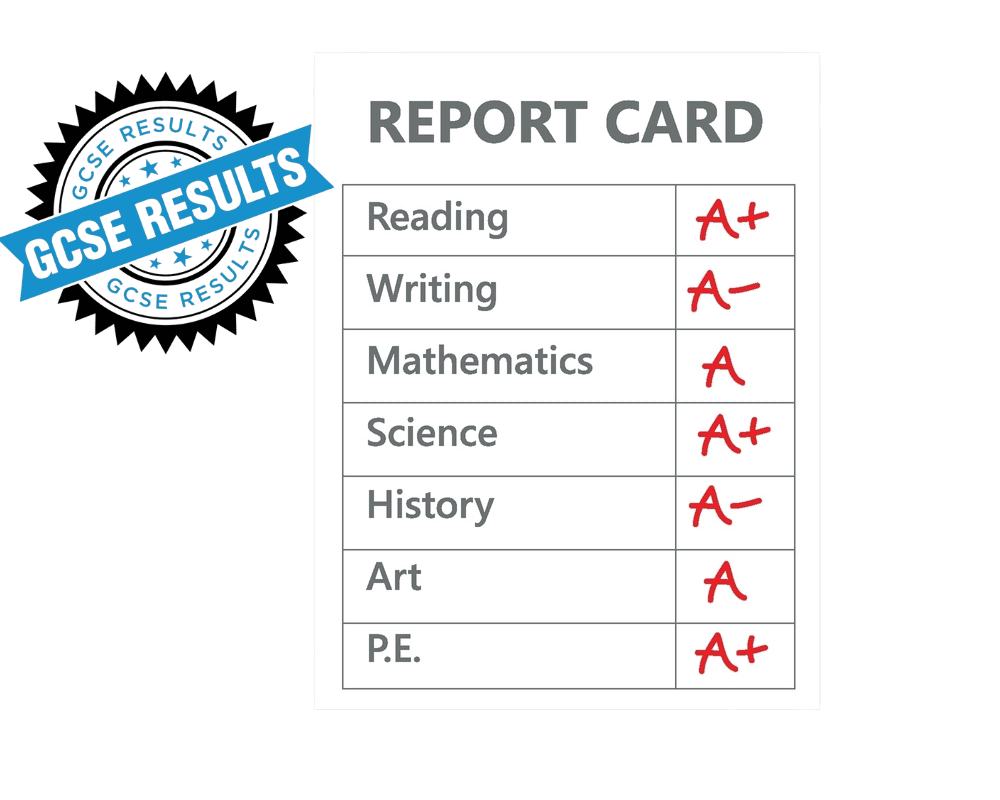The GCSE grading system is one of the most important aspects of secondary education in the UK. For students, parents, and teachers, understanding how GCSE grades work can make a huge difference in exam preparation, university applications, and career planning.
In this detailed guide, we’ll explain everything about GCSE grades, grade boundaries, bad GCSE grades, and even what counts as good GCSE grades. We’ll also look at trends like the Edexcel GCSE Maths grade boundaries 2025 and how to interpret them.
Pro Tip: If you want to predict your own performance before official results, you can try the free GCSE Grade Predictor to estimate your likely grade outcomes.
What Is GCSE?
Before diving into the grading system, let’s start with the basics: what is GCSE?
GCSE stands for General Certificate of Secondary Education, which is a qualification taken by students in England, Wales, and Northern Ireland, usually at the age of 15–16. Subjects range from English, Mathematics, and Science to History, Geography, Art, and Technology.
Unlike older systems that used A–G grades*, the UK now uses a numeric scale (9–1), where 9 is the highest grade.
GCSE Meaning and Why It Matters
The meaning of GCSE is simple — it’s the standard academic benchmark at the end of secondary school. GCSE results influence:
- Post-16 education choices (A-levels, apprenticeships, vocational training)
- College and sixth form admissions
- University entry requirements
- Career opportunities (especially in roles requiring Maths & English)
Employers and educational institutions alike consider grades at GCSE as proof of foundational knowledge and skills.
How Do GCSE Grades Work?
Now let’s tackle the key question: how do GCSE grades work?
The system is designed to show a student’s level of understanding on a scale from 9 (highest) to 1 (lowest). Here’s the breakdown:
- 9, 8, 7 → Equivalent to A*–A (high achievement)
- 6, 5, 4 → Equivalent to B–C (pass grades, with 4 as the standard pass)
- 3, 2, 1 → Equivalent to D–G (below pass, weaker performance)
- U (Ungraded) → Below standard; no grade awarded
This structure allows universities and employers to see clearer distinctions among top-performing students.
GCSE Grading System: The 9–1 Scale Explained
The GCSE grading system may seem confusing at first, but here’s how it works in practice:
- Grade 9: Exceptional performance, above an A* in the old system.
- Grade 8: Very strong, just below top tier.
- Grade 7: Strong performance, equivalent to an A.
- Grade 6: High B equivalent.
- Grade 5: Strong pass, often required for entry into sixth form.
- Grade 4: Standard pass, minimum needed for many colleges.
- Grade 3–1: Below pass, weaker performance.
- U: Ungraded.
This shift from letters to numbers helps identify the very highest achievers more precisely.
GCSE Grade Boundaries 2025
Each year, exam boards set GCSE grade boundaries to decide what raw mark translates to which grade. These boundaries are not fixed — they change based on exam difficulty and overall student performance.
For example, the GCSE grade boundaries 2025 will differ from previous years, depending on how challenging the papers are.
Students often stress about these numbers, but they are designed to ensure fairness across different exam sessions.
Edexcel GCSE Maths Grade Boundaries 2025
One of the most searched topics is the Edexcel GCSE Maths grade boundaries 2025. Maths, being a core subject, often sparks curiosity and concern.
For instance, in a given year:
- A Grade 4 may require 40–45% of total marks
- A Grade 7 may need around 65–70%
- A Grade 9 might demand 85%+
These numbers shift annually, so always check official updates from Edexcel.
What Are Good GCSE Grades?
Parents and students often ask: what are good GCSE grades?
Generally:
- 7–9 → Excellent (top universities often expect these in core subjects)
- 5–6 → Strong passes, acceptable for most colleges and sixth forms
- 4 → Minimum standard pass (important for Maths & English)
If your career or university pathway demands higher-level courses, aiming for 6–9 is usually necessary.
What Are Bad GCSE Grades?
No grade is truly “bad” if you’ve put in effort, but from a practical standpoint:
- Grades 1–3 are considered weak
- U (Ungraded) shows insufficient performance
That said, bad GCSE grades do not define your future. Many students retake subjects, especially Maths and English, to improve. Others pursue vocational routes, apprenticeships, or alternative qualifications.
How GCSE Are Graded: The Process
Wondering how GCSE are graded? Here’s the step-by-step:
- Exams marked by examiners
- Raw marks collected
- Statistical adjustments applied (to account for paper difficulty)
- Grade boundaries set by exam boards
- Final grades awarded
This ensures fairness and consistency across schools nationwide.
Using a GCSE Grade Predictor
Many students like to estimate their grades before results day. That’s where a tool like the GCSE Grade Predictor comes in handy.
It lets you input your mock exam scores, coursework results, and practice test performance to get a likely grade outcome.
This is especially useful for:
- Setting study targets
- Understanding exam readiness
- Reducing stress by giving a clearer picture of where you stand
Common Questions About GCSE Grades
Here are some FAQs to clear up common doubts:
How does GCSE grades work?
GCSEs use a 9–1 grading system, where 9 is the highest and 1 is the lowest. Pass marks are typically at grade 4 (standard pass) and grade 5 (strong pass).
What are GCSE grades?
They are the results awarded to students after exams, showing academic performance on a numeric scale.
How GCSE are graded?
They are graded based on exam performance, adjusted by grade boundaries, and standardized by exam boards.
What are good GCSE grades?
Grades 7–9 are excellent, 5–6 are strong passes, and 4 is the minimum pass.
What happens if I get bad GCSE grades?
If you get bad GCSE grades (1–3), you can retake exams or pursue vocational alternatives. Employers and universities value persistence and improvement.
Final Verdict on GCSE Grades
The GCSE grading system may look complex, but once you understand how GCSE grades work, it becomes clearer:
- A 9–1 system ensures fairness and precision
- Grade boundaries shift yearly to reflect exam difficulty
- Good GCSE grades (7–9) open doors to top opportunities
- Bad GCSE grades are not the end — retakes and alternative pathways exist
And remember, you don’t have to guess your results. Tools like the GCSE Grade Predictor give you insights and motivation as you prepare for your exams.
Created by GW Calculator.



